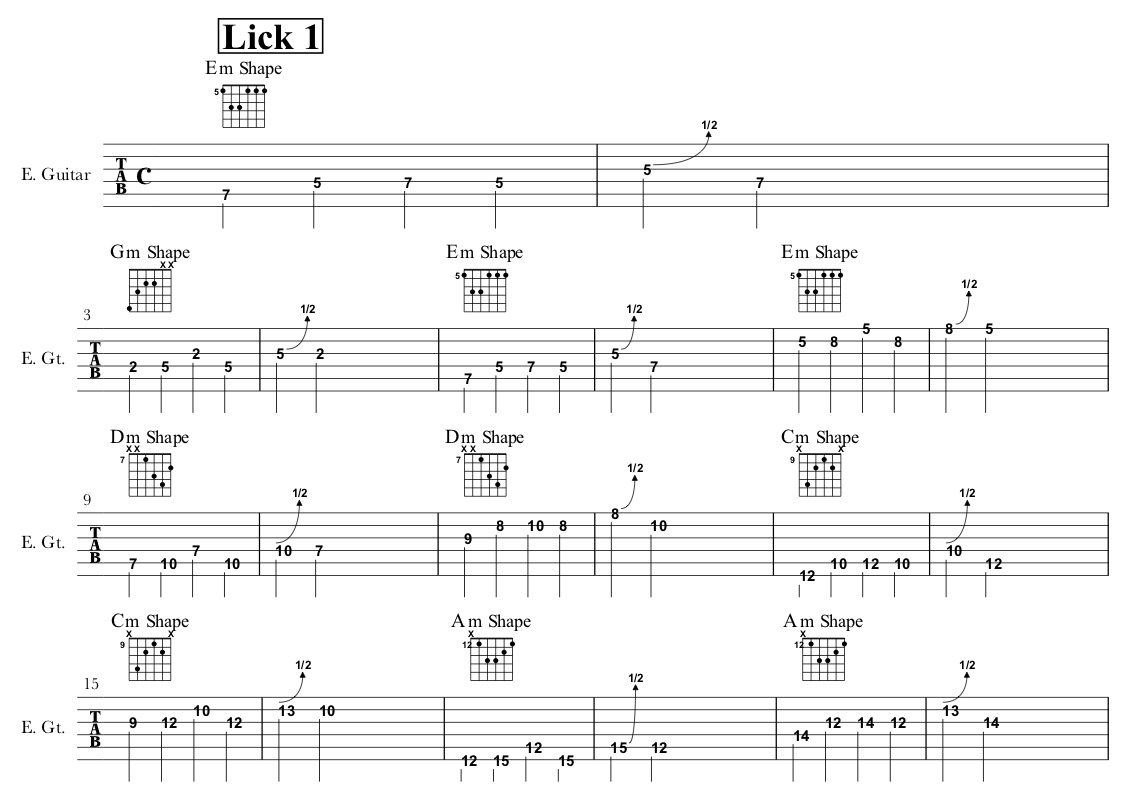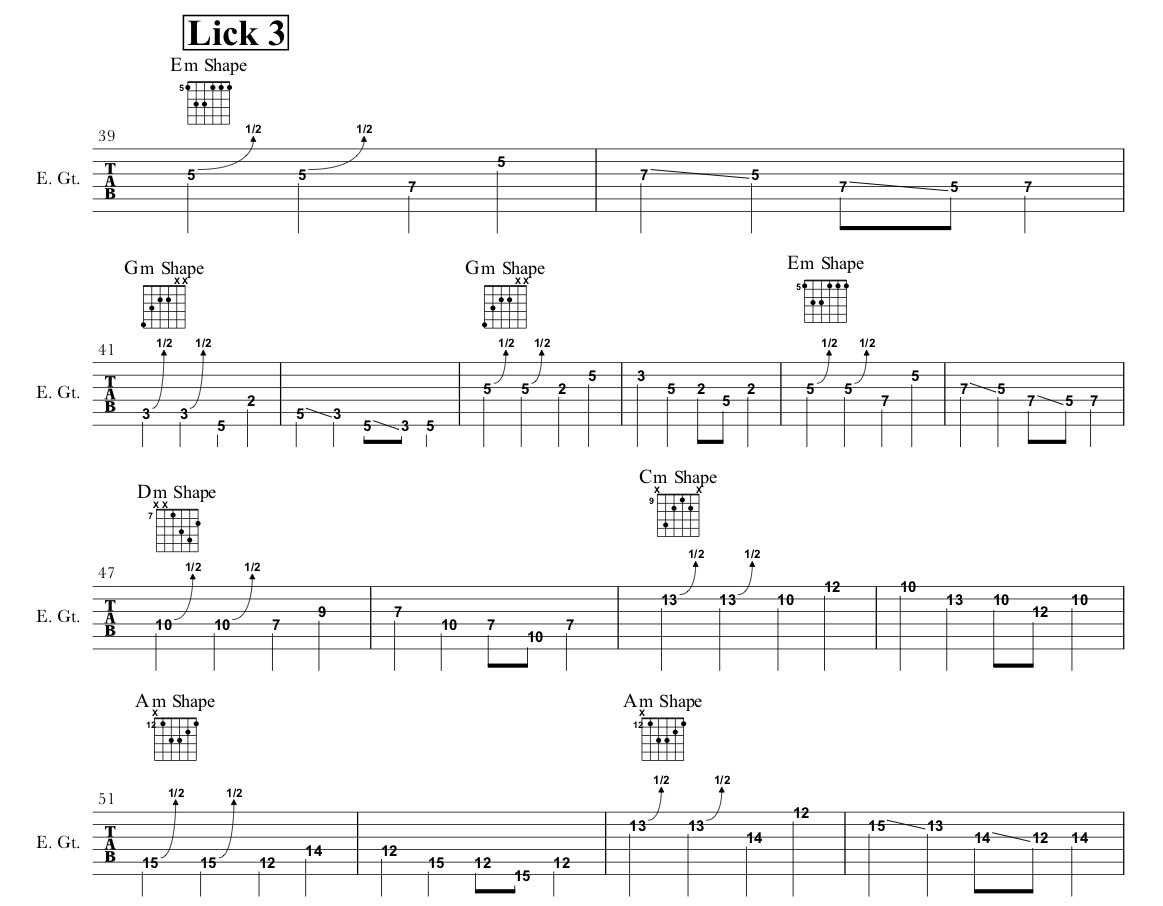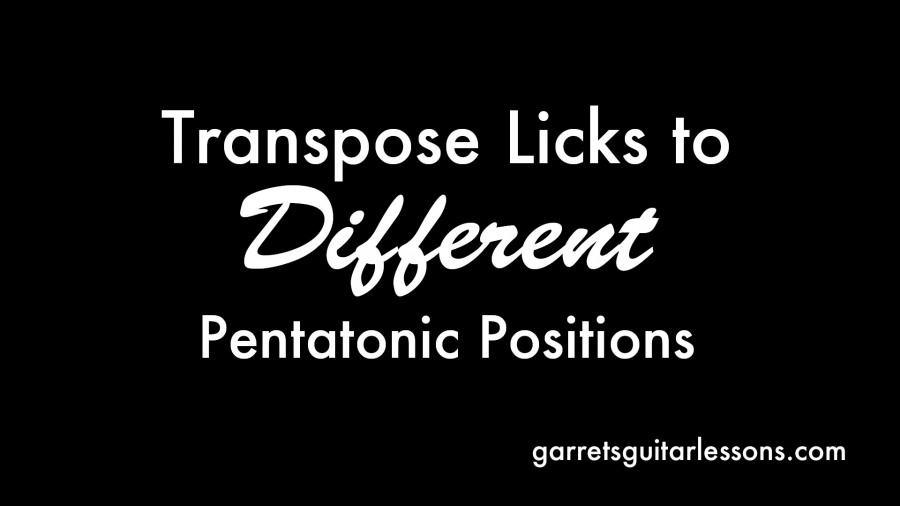There are 5 pentatonic shapes but most only use 2. How do we start using the other 3?! One way is to get used to how licks we’re already familiar with fit into these other shapes.
In this blog post I’ll be using three licks but transposing them to different positions all throughout the fretboard. I’ll be in the key of Am and I’ll start out with the most common Pentatonic Shape – The Em Shape. Once I establish the initial lick I’ll start moving them around to all the different positions. Sometimes inflections will have to change, sometimes the octave will have to change but running through a couple of different licks and seeing how they move across the fretboard should help us actually start using these different shapes!
Now before I go through a few licks in different positions I want to preface this by saying I’m always careful to refer to these as “shapes” because they’re all the same notes just situated differently. A reason why we might want to use these different shapes is that different phrases can come to us. We may see the groupings of the same notes in a different light, but there are no different notes.
With that out of the way it’s important to keep note of the root as a way to ground us. So instead of looking at these as random disjointed finger placements look at them as “If I put my finger on this root I get the scale situated this way”.
Lick 1:

So you’ll notice with this one I have two places to play this lick in my Em Shape, Dm Shape, Cm Shape and Am Shape. This one ends on our root note, a good way to ground us!
Lick 2:

This one has a pull off from 8 to 5 on the 2nd string for our initial lick. Some times that’s possible as we see in the first Gm Shape but depending on the placement of the notes in the position sometimes that’s not possible. We have two ways to play it in our Gm, Em and Am Shapes. This one starts and ends on our root note!
Lick 3:

Here’s the last one of the bunch I’ll be moving to the different positions. This one also ends on the root note to help us get grounded and much like the second lick, incorporates some pull off’s that may or may not be doable depending on our position. We have two places to play it in our Gm and Am Shape.
So hopefully these couple of examples gets you thinking a bit differently about our pentatonic positions and how we can actually solo using some of our less common pentatonic positions!

